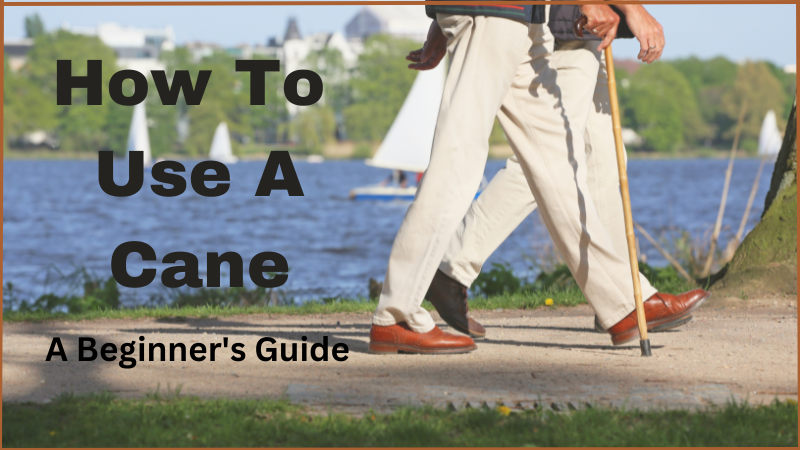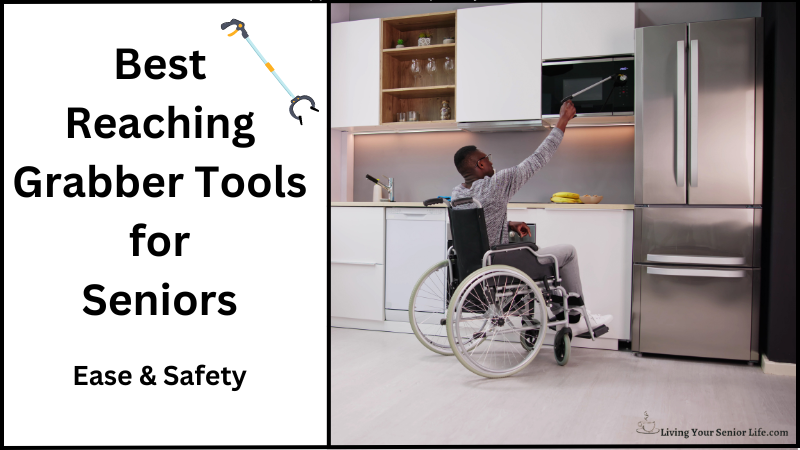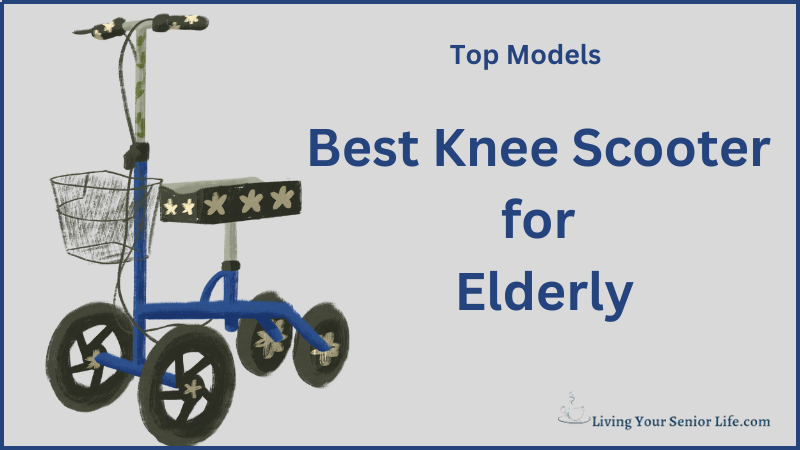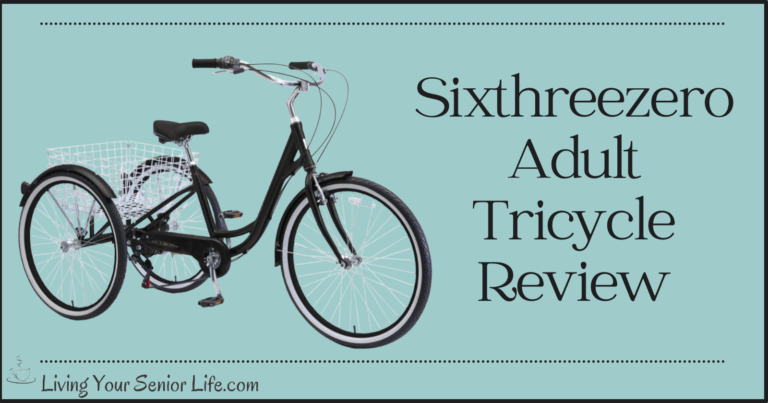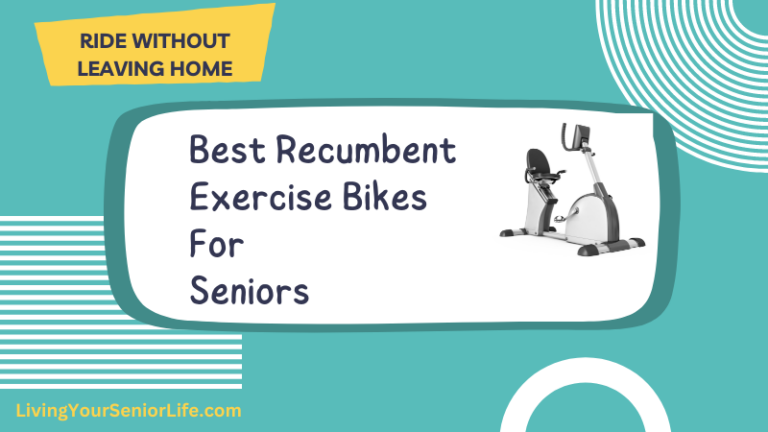As we age, maintaining independence and mobility becomes increasingly important for the elderly. However, certain tasks like getting in and out of chairs, beds, or vehicles can pose challenges due to reduced strength, balance, or mobility issues. In such situations, assistive devices like lift belts can make a significant difference, not only in ensuring safety but also in preserving dignity and autonomy. In this guide, How To Use A Lift Belt For The Elderly, we’ll delve into the world of lift belts for the elderly, exploring their benefits and offering essential tips and techniques for their safe and effective use.
Whether you’re a caregiver, a family member, or an elderly individual seeking greater independence, understanding how to utilize these devices properly is paramount. So, let’s explore the proper handling techniques that can enhance the quality of life for seniors and promote safer mobility practices.
Key Takeaways
- Transfer belts aid in safe transfers and fall prevention for the elderly.
- Various types of belts, such as quick-release and infection-control gait belts, cater to specific needs.
- Correct usage, with assistance from caregivers, is crucial for patient and caregiver safety.
Understanding Lift Belts
Lift belts are vital tools in elder care, facilitating safe transfers and minimizing the risk of injury for both the patient and caregiver.
Strategically designed for support, lift belts assist with movements from sitting to standing positions and are essential for elderly patients with mobility issues.
Types and Features
Lift belts come in various materials like heavy-duty nylon and soft polyester, offering durability and comfort.
Gait belts include features like comfort handles for a secure grip, adjustable straps for a snug fit around the patient’s waist, and quick-release buckles that facilitate easy and safe handling.
- Ergonomic Design: This includes belts that provide additional support with padding and are shaped to fit the body well.
- Weight Capacity: Always check the weight-bearing capacity to ensure it meets the needs of the patient.
- Materials: Options range from durable metal buckles for longevity to soft nylon for comfort.
- Specialty Belts: Some belts have infection control features or disposable options for care facilities.
Selecting the Right Belt
Selecting the right lift belt involves considering the patient’s size, mobility level, and specific needs. For daily activities and physical therapy sessions, a regular belt with a durable metal buckle and a weight capacity that accommodates the user may suffice.
When looking for fall prevention or assistance for a caregiver in transferring patients, consider a belt that includes:
- Safety Device Features: Quick-release gait belts offer a safe transfer, while belts with comfort handles reduce the risk of injury for the user.
- Patient Mobility Needs: For those needing additional support, a belt with leg straps may provide more stability.
- Caregiver Ease: Belts with comfort handles and ergonomic design reduce the chance of back injury to the caregiver.
- Quality Assurance: Look for a reputable top name in mobility aids to ensure a high quality of life for the elderly.
Preparing for a Transfer
Using a lift belt properly is crucial when assisting those with mobility issues. This process ensures comfortable and safe transfers that are beneficial to both the caregiver and the patient.
Communication and Consent
Before using a transfer belt, it’s important to communicate with the individual. Explain the reasons for using the belt and how it will help with daily activities. Obtain verbal consent from the patient, ensuring they’re comfortable and understand the upcoming process.
Safety Precautions
Selecting the right transfer belt involves sizing it according to the patient’s waist circumference.
Always inspect the teeth of the buckle to confirm they’re secure. Look for red flags like frayed straps or a broken buckle to prevent any risk of injury.
- Check the Belt Before Use:
- Fabric integrity
- Buckle functionality
- Sizing Correctly:
- Waist circumference
- Weight-bearing capacity
Transfer belts should provide a secure grip. The caregiver should use proper body mechanics to avoid a back injury, keeping their back straight and bending at the knees.
Correct Placement of a Gait Belt on an Elderly Person
Proper placement of a transfer belt is key for patient safety. The belt should sit at the patient’s waist and be made of soft nylon or another comfortable material.
For quick-release gait belts, ensure the quick-release buckle is easily accessible. The belt’s adjustable straps should allow for a secure grip without causing discomfort, aiding in safe transfers when assistance of a caregiver is present.
Executing Safe Transfers

Proper Positioning and Environment Setup
When using a grip belt for mobility prepare the environment, removing any obstacles that could cause tripping. Ensure the area is well-lit and the pathway to the intended place is clear.
For the patient:
- From Sitting Position:
- The patient should be seated at the edge of the chair or bed, with feet flat on the ground.
- Position the lift belt snugly around the patient’s waist, over their clothing, for a safe and comfortable grip.
- For Standing Position:
- Help the patient lean slightly forward, using the belt’s support for stability.
- Encourage the patient to press their feet firmly into the ground to assist in achieving a balanced standing position.
When utilizing a lift belt to assist elderly patients with mobility issues, executing safe transfers is paramount.
Safe transfers help prevent falls and injuries while aiding patients in moving from sitting to standing positions and vice versa.
Lifting Techniques
Your choice of lifting techniques during transfers largely determines the individual’s safety as well as your own.
When using a patient lift belt with comfort handles, make sure that you are familiar with the weight-bearing capacity of both the belt and the elderly person.
- To begin, place the lift belt snugly around the patient’s waist over their clothing.
- Confirm that both the durable metal buckle and the quick-release buckle are secured properly to avoid any risk of injury due to slippage.
- Lifting should always be done with the strength of your leg muscles, and keeping your back straight to prevent back injury.
- When moving an individual from a sitting position or to a standing position, a coordinated effort with clear communication between you and the patient ensures control and stability throughout the transfer.
Posture and Body Mechanics
- Good posture and body mechanics are essential to perform transfers safely.
- You must stand with feet shoulder-width apart to maintain balance.
- Engage your core muscles and use your leg strength when initiating the move, offering additional support to the patient.
- Avoid twisting your body while lifting to maintain proper alignment and risk reduction.
- Encourage the patient to participate as much as their strength allows, guiding them through the movements to foster a sense of control and independence during daily activities.
How To Use A Gait Belt Properly To Help Lift An Individual From The Floor
To lift someone from the floor using a gait belt, first ensure they are in a sitting position. Place the belt around the patient’s waist over their clothing, making sure it’s snug but comfortable.
For gait belts with a durable metal buckle, thread the belt through the teeth of the buckle and secure it with the quick-release buckle.
With your knees bent, help them to a standing position, using the belt for additional support. It’s important for to use proper body mechanics to avoid back injury.
Family members assisting in daily activities can learn the proper techniques from physical therapists to ensure effective use.
What are the Considerations for Safely Using a Gait Belt During Ambulation?
During ambulation, the gait belt serves as a safety device, assisting in steady patient mobility. Always gauge the elderly patient’s weight-bearing capacity before attempting to mobilize.
Also, utilize comfort handles, if available, for a secure grip. Many times using a gait belt improves confidence and stability for the patient during physical therapy.
Monitor continuously for any discomfort or signs that the standing position is unsustainable.
In What Situations is it Advised Not To Use a Gait Belt
Do not use a gait belt if the individual has recently undergone abdominal or back surgery, is pregnant, has a presence of wounds, or has conditions such as a hiatal hernia or severe osteoporosis.
In these cases, transfer garments or alternative patient lift belts designed to meet these unique needs should be considered. Always consult healthcare providers before using a transfer belt for patient transfer to minimize the risk of injury.
Aftercare and Maintenance
Maintaining your lift belt properly extends its life and ensures safety during transfers. Proper aftercare is crucial for the belt’s performance and the elderly’s dignity.
Belt Inspection and Care
Regularly inspect your transfer belt for signs of wear, such as fraying or abrasion.
It’s essential to ensure that the durable metal buckle’s teeth are intact and the quick-release mechanism functions smoothly for patient safety. Here are specific steps and things to look out for:
- Visual Inspection: Examine the transfer belt for any tears, cuts, or worn areas. The fabric, often soft nylon for comfort, should be intact without any signs of thinning.
- Cleaning: Follow manufacturer instructions for cleaning to prevent infection control issues. Use mild detergent and warm water for belts that are not disposable medical products.
- Drying: Allow the belt to air dry completely before storage; never use high heat as it can degrade different materials used in transfer belts.
- Storage: Store in a dry, cool place away from direct sunlight. Roll or lay the belt flat to avoid creases.
Healthcare Professional Guidance
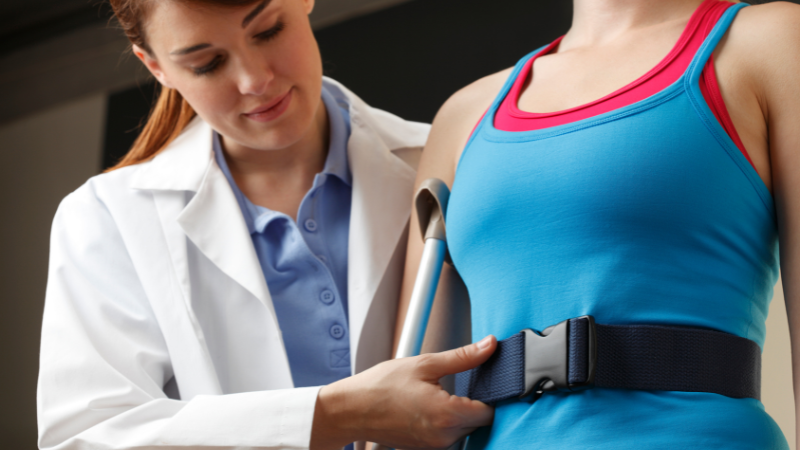
Seek input from healthcare professionals to maximize the patient lift belt’s effectiveness and reduce the risk of injury. Here’s why involving a medical expert is beneficial:
- Proper Fit & Adjustment: A healthcare provider, like a physical therapist, can teach you how to adjust the lift belt snugly around the patient’s waist. They can also show you how to do this in both a standing or sitting position. Adjustable straps and leg loops are essential for stability and patient mobility.
- Usage Techniques: Learn correct techniques for safe transfers with additional support from healthcare providers. This includes understanding the weight-bearing capacity and how to use comfort handles effectively with the assistance of a caregiver.
- Training on Different Types: Health professionals can advise on different types of gait belts to suit varying mobility issues. This includes quick-release gait belts and those with leg straps.
- Preventative Measures: Physical therapists can provide guidance on fall prevention, promoting independence in daily activities, and recommend the best mobility aids for your family member.
Conclusion
In the journey towards ensuring the safety and well-being of our elderly loved ones, lift belts emerge as indispensable tools. Through this guide, we’ve explored the crucial role these devices play in promoting independence and mobility among seniors. By adhering to the safe handling techniques discussed, caregivers and seniors alike can navigate daily activities with greater ease and confidence.
Remember, the key to maximizing the benefits of lift belts lies not only in their proper utilization but also in fostering a supportive and understanding environment. Communication, patience, and empathy are essential components of caregiving, and incorporating these qualities into the use of assistive devices can significantly enhance the overall experience for both caregivers and seniors.
As we continue to prioritize the needs of our aging population, let us embrace innovative solutions like lift belts, not only as tools for physical assistance but also as symbols of respect for the autonomy and dignity of our elderly loved ones. Together, let’s strive to create environments where seniors can thrive, age gracefully, and maintain the independence they deserve.
With dedication, compassion, and the right resources at hand, we can make a profound difference in the lives of our elderly community members. Let’s journey forward with confidence, knowing that we’re equipped with the knowledge and tools necessary to support and empower our seniors every step of the way.

